


|
真摯,敏銳的台灣電影創作人
Great Taiwanese Film makers
侯孝賢 Hou Hsiao Hsien
Director Hou Hsiao Hsien, in a 1988 New York Film Festival World Critics Poll, was voted one of three directors who would most likely shape cinema in the coming decades. He has since become one of the most respected, influential directors working in cinema today. In spite of his international renown, his films have focused exclusively on his native Taiwan, offering finely textured human dramas that deal with the subtleties of family relationships against the backdrop of the island's turbulent, often bloody history. All of his movies deal in some manner with questions of personal and national identity, particularly, "What does it mean to be Taiwanese?" In a country that has been colonized first by the Japanese and then by Chiang Kai-Shek's repressive Nationalist Government, this question is pregnant with political connotations.
Hou was born to a member of the Hakka ethnic minority in southern Guangdong province in mainland China, but his parents emigrated to Kaohsiung, Taiwan, in 1949, to escape the bloodshed of the Chinese civil war. After serving in the military, Hou entered the film program at the National Taiwan College of the Arts. He graduated in 1972 and worked as a salesman until he landed a job as an assistant director and a screenwriter. In 1980, he made his directorial debut with Cute Girl, but he did not attract critical attention until The Son's Big Doll appeared as an episode of the omnibus film Sandwich Man (1983). This film, along with another portmanteau movie, In Our Time(1982), is considered one of the first films of the New Taiwan Cinema movement, which injected a new level of sophistication and vitality into a moribund film industry previously known for martial arts spectaculars; it arose from the Foundation for the Development of Motion Picture Industry and the loosening of censorship laws in the late '70s and was led by such young filmmakers as Hou and Edward Yang.
Hou's work centers on two recurring themes, the social upheaval and erosion of traditional family ties resulting from Taiwan's rapid urbanization in the 1960s and 1970s and the representation of Taiwan as a multicultural, multilingual society, a view that intentionally differed from the government's enforcement of Mandarin as the official tongue. For example, Dust in the Wind (1986) follows the lives of two country innocents who move to Taipei, and Daughter of the Nile (1987) tells of a displaced family torn apart by the pressures of the city. Characters in Hou's films, more often than not, speak Taiwanese, Hakka, Fukienese, or even Japanese, as opposed to the state-sanctioned language, as seen in his autobiographical A Time to Live, a Time to Die (1985) and in City of Sadness (1989). Stylistically, Hou has been compared to Japanese filmmaker Yasujiro Ozu. Both directors favor a minimalist approach that downplays overt melodrama, focusing instead on the quiet nuances of human emotion. Both employ long static shots and low camera angles. But unlike Ozu, Hou's films challenge the viewer in their use of episodic plot lines, complex juxtapositions, and off-scene space.
In 1989, Hou overcame government censors to create his masterpiece, City of Sadness, the first film to confront the so-called Incident of February 28, 1947, a Tianamen Square-style massacre of native Taiwanese committed by government troops. Well-received domestically, the film was acclaimed by international critics and won the first Golden Lion awarded to a Chinese film at the Venice Film Festival. For his next film, the second in his Taiwan trilogy, Hou continued to investigate Taiwanese history in the semi-documentary Puppet Master (1993), which focused on Japan's occupation of Taiwan as seen through the eyes of puppet artist Li Tien-Lu. The final film in the trilogy, Good Men, Good Women (1995), about a political prisoner released in 1987 who finds modern Taiwan cold and alienating, has often been cited as one of the finest films of the 1990s. Such subsequent films as Goodbye, South, Goodbye (1996) and Flowers of Shanghai (1998) have also been critically lauded but have failed to find an audience at home. Apart from directing, Hou also served as production manager for the landmark mainland Chinese film Raise the Red Lantern (1991) and acted in Edward Yang's Taipei Story (1985). In 1997, French director Olivier Assayas directed a documentary about Hou entitled HHH: Portrait of Hou Hsiao Hsien. —All Movie Guide Jonathan Crow
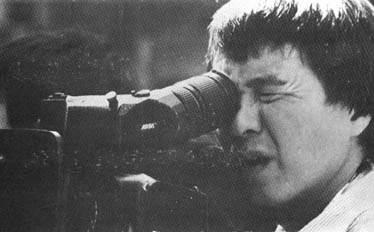
- 就是溜溜的她 Jiushi liuliu de ta (1980)...aka Cute Girl (1980) or Lovable You (1980)
- 在那河畔青草青 Zai na hepan qingcao qing (1983)...aka Green, Green Grass of Home, The (1983)
- 兒子的大玩偶 Erzi de Dawan'ou (1983)...aka Sandwich Man, The (1983)
- 冬冬的假期 Dongdong de jiaqi (1984)...aka Summer at Grandpa's, A (1984)

- 童年往事 Tong nien wang shi (1985)...aka Time to Live and the Time to Die, The (1985)

- 戀戀風塵 Lianlian fengchen (1986)...aka Dust in the Wind (1986)

- 悲情城市 Beiqing chengshi (1989)...aka City of Sadness (1989)

- 戲夢人生 Hsimeng jensheng (1993)...aka In the Hands of a Puppet Master (1993)
(International: English title)
...aka Puppetmaster, The (1993)

- 好男好女 Haonan haonu (1995)...aka Good Men, Good Women (1995)
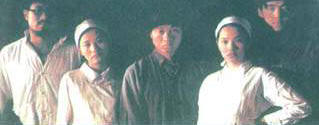
- 南國再見˙南國 Nanguo zaijan, nanguo (1996)...aka Goodbye South, Goodbye (1996)
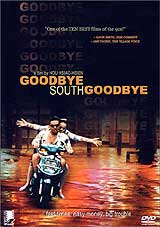
- 海上花 Hai shang hua (1998)...aka Flowers of Shanghai (1998)

- 千禧曼波-薔薇的名字 Qianxi manbo (2001)...aka Millennium Mambo (2001) (France) (USA)

楊徳昌 Edward Yang
Though largely unknown in the West, Edward Yang has emerged as one of international cinema's most distinctive voices and, along with Hou Hsiao Hsien, one of Taiwan's finest filmmakers. Born in Shanghai in 1947, Yang fled with his family to Taiwan during the tumult of the Chinese Civil War. At a young age, he found creative inspiration in Japanese comic books and soon began writing his own works. In 1974, having received an advanced degree in Computer Science at Florida State University, he went on to study film at the University of Southern California. He quickly grew disillusioned with the program's commercial emphasis, however, and withdrew after only one semester. He remained in America, working as a computer expert for several years. During this time, he kindled his passion for cinema by writing a script and aiding the production of the Hong Kong television movie Winter of 1905 (1981). Upon his return to Taiwan, he directed a number of television shows, including a 1981 episode of the acclaimed 11 Women entitled "Duckweed." His break came when he directed the short Desires as part of the landmark omnibus film In Our Time (1982), which heralded the beginning of New Taiwan Cinema.
Like the works of fellow New Taiwan director Hou Hsiao Hsien, Yang's films infused Taiwan's moribund film industry with an unprecedented degree of sophistication and vitality. Yet, while Hou's films are primarily set in the island's picturesque countryside, Yang has created portraits of the pressures and uncertainties of urban life. His career falls into three distinct periods: early urban dramas (Taipei Story [1984], The Terrorizers [1986]), period films (A Brighter Summer Day [1991], Desires), and satires (A Confucian Confusion [1995], Mahjong [1996]). His first three features recall the measured pacing and oblique meanings of Michelangelo Antonioni films, while they also employ complex narrative structures, flashbacks, voice-overs, long takes, and offscreen space. In these early films, his characters struggle to make sense of the chaos of a culturally deracinated urban landscape populated with icons from the West. In Taipei Story, two characters are amazed by the site of a walking Pepsi can; in The Terrorizers, an Asian-American woman clutches a U.S. Navy-issued lighter.
In 1991, Yang released his masterpiece. Its title taken from an Elvis Presley ballad, A Brighter Summer Day is a sprawling tale about teen gangs after the 1949 exodus of mainland Chinese to Taiwan. As in his earlier films, Yang used an intricate narrative structure to paint the portrait of a society in flux, but in this case, he explored thornier social issues such as the clashes between Chinese immigrants and native Taiwanese, the political imperialism of pre-war Japan, and the cultural imperialism of post-war American pop culture. For his subsequent films, Yang released a pair of frenzied screwball satires that pushed his preoccupation with cultural disassociation to an extreme. He depicted Taipei as a postmodern quagmire in which the false and the authentic, the modern and the traditional, are utterly blurred. In all of his films, Yang examines Taiwan's modernizing society under a moral microscope. Skeptical of the commercial amorality of the West and keenly aware of its destabilizing effects on Eastern cultures, he sees even less viability for such traditional philosophies as Confucianism in a globalizing economy. Yang's films, while investigating the past and present, cast a wary eye towards Taiwan's uncertain future. ~ Jonathan Crow, All Movie Guide

- 海灘的一天 Haitan de yitian (1983)...aka That Day, on the Beach (1983)
- 光陰的故事 Guangyinde gushi (1983)...aka In Our Time (1983)
- 青梅竹馬 Qingmei Zhuma (1985)...aka Taipei Story (1985)
- 恐怖分子 Kongbu fenzi (1986)...aka Terroriser, The (1986),aka Terrorisor, The (1986)
aka Terrorist, The (1986),
aka Terrorizer, The (1986), aka Terrorizers, The (1986)

- 牯嶺街少年殺人事件 Guling jie shaonian sha ren shijian (1991)...aka Brighter Summer Day, A (1991)
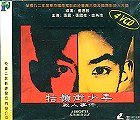
- 獨立時代 Duli shidai (1994)...aka Confucian Confusion, A (1994)

- 麻將 Mahjong (1996)...aka Couples
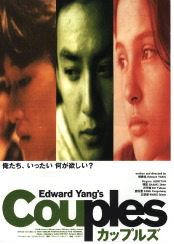
- 一一 Yi yi (2000)...aka Yan Yan - Natsu no omoide (2000) (Japan)
...aka Yi yi: A One and a Two... (2000)
(International: English title)
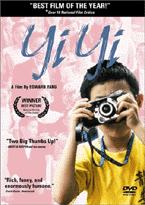
蔡明亮 Tsai Ming Liang
Along with Edward Yang and Hou Hsiao-hsien, Tsai Ming-liang became one of Taiwan's most prominent directors during the 1990s. His films regularly appeared in festivals around the globe and he received lavish praise from film critics worldwide. Born in Malaysia in 1957, Tsai moved to Taiwan 20 years later and graduated from the Chinese Cultural University in 1982. For the next ten years, he supported himself by working in theater and writing screenplays for films and television. He directed his first feature in 1992, Rebels of the Neon God, which, with its tough but tender depictions of disaffected youth, earned him comparisons to Rainer Werner Fassbinder. In addition to Fassbinder, Tsai was also influenced by François Truffaut, to whom he was exposed as a student. Like Truffaut, who developed a collaboration with actor Jean-Pierre Léaud over the course of several projects, Tsai cast Lee Kang-Sheng as the lead in all of his films. (Lee appeared with Léaud in What Time is it There? as an homage to Truffaut.) Although not a professional actor, Lee, who claimed his own devoted cult of admirers among Tsai's fans, exuded a unique presence onscreen and a naturalness before the camera that Tsai used to great effect. His style differed from his idol Truffaut's, however. As with his countrymen Yang and Hou, Tsai preferred long takes, few close-ups, and sparse dialogue. And like another of his influences, Michelangelo Antonioni, he displayed a genius for placing the camera at exactly the right spot and letting the action unfold before it. Rebels of the Neon God would become a template for the rest of his films, all of which, in some way, were about loneliness and walked a tightrope between deep sadness and deadpan humor. In his second film, Vive L'Amour, three isolated Taipei dwellers connect in odd ways via a vacant apartment. In the much more unsettling The River, a young man develops a debilitating neck ailment that may or may not be psychosomatic after he is discovered by a movie director and asked to play a corpse floating face down in the dirty Tamsui River. The Hole concerns a mysterious epidemic sweeping Taipei as the new millennium approaches, and features a number of surreal musical numbers. Perhaps his most humorous film, What Time is it There? features Lee as a man on the street selling watches and who becomes obsessed with the idea that Paris exists in a completely different time. In addition to his features, Tsai also made a number of videos and short films, the latest of which, The Skywalk Is Gone, was set near where a skywalk (that served as an important location) in What Time is it There? was demolished. The film both commemorated the skywalk and served as a bridge to the director's next feature. Tsai's honors include the FIPRESCI award at the 1998 Cannes Film Festival for The Hole, the Silver Bear at the 1996 Berlin Film Festival for The River, and the Golden Lion at the 1994 Venice Film Festival for Vive L'Amour. ~ Tom Vick, All Movie Guide
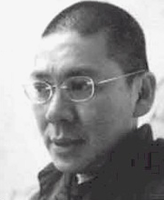
- 小孩 Xiao hai (1991)...aka Boys (1991/II)
(International: English title)...aka Youngsters (1991)
- 青少年哪吒 Ch'ing shaonien na cha (1992)...aka Rebels of the Neon God (1992)
aka Teenage Norcha (1992)

- 愛情萬歲 Aiqing wansui (1994) ...aka Vive L'Amour (1996) (USA)

- 河流 He liu (1997) ...aka River, The (1997)

- 洞 Dong (1998) ...aka Hole, The (1998/II) (Belgium: English title) (France)
(International: English title)
... aka Last Dance, The (1998) (International: English title)

- 你那邊幾點 Ni neibian jidian (2001)
aka 7 to 400 Blows (2001)
aka Et là-bas, quelle heure est-il? (2001) (France)
aka Qi dao si bai ji (2001)
aka What Time Is It Over There? (2001) (International: English title)
aka What Time Is It There? (2001) (International: English title)
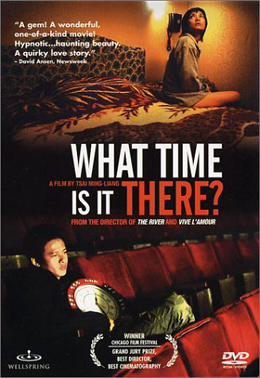
- 不散 Bu san (2003) ...aka Bu jian bu san (2003)...aka Good Bye, Dragon Inn (2003) (International: English title)

|


